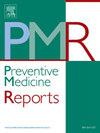Association of accelerated biological aging with kidney stone: Insights from the U.S. National health and nutrition examination survey
IF 2.4
3区 医学
Q2 PUBLIC, ENVIRONMENTAL & OCCUPATIONAL HEALTH
引用次数: 0
Abstract
Objective
Biological age is a more accurate measure of aging than chronological age. This study examines the association between biological age and the prevalence of kidney stones.
Methods
Data were sourced from the U.S. National Health and Nutrition Examination Survey 2007–2018 cycles. Biological age was assessed using the Klemera-Doubal Method (KDM-Age) and Phenotypic Age (Pheno-Age). Residuals from the regression of biological age measures on chronological age were computed to determine KDM-Age and Pheno-Age acceleration. Weighted chi-square tests, linear trend analyses, and multivariable logistic regression models were used.
Results
A total of 17,905 people were included. The weighted prevalence of kidney stones significantly rose with increasing quartiles of chronological age, KDM-Age, and Pheno-Age in the overall population, and across sex and age subgroups. Significant increasing trends in prevalence were observed across Pheno-Age acceleration quartiles for sex and age subgroups, especially in males and younger individuals (< 65 years) (P for linear trend <0.001). No significant trends were observed for KDM-Age acceleration quartiles in any subgroup. Higher Pheno-Age acceleration was significantly associated with an elevated risk of kidney stones (OR = 1.32, 95 % CI: 1.12–1.55), with notably stronger associations observed in males and younger individuals.
Conclusions
Elevated Pheno-Age levels are associated with an increased prevalence of kidney stones, particularly among males and younger individuals. These findings underscore the potential utility of Pheno-Age in identifying individuals at high risk for kidney stones and facilitating early intervention.
加速生物老化与肾结石的关联:来自美国国家健康和营养检查调查的见解
目的生物年龄是比实足年龄更准确的衰老指标。本研究探讨了生物年龄与肾结石患病率之间的关系。方法数据来自2007-2018年周期的美国国家健康与营养检查调查。采用klemera - double法(KDM-Age)和表型年龄(phentype age)评估生物年龄。计算生物年龄测量对实足年龄回归的残差,以确定KDM-Age和Pheno-Age加速。采用加权卡方检验、线性趋势分析和多变量logistic回归模型。结果共纳入17905人。肾结石的加权患病率随着总体人群中实足年龄、KDM-Age和Pheno-Age四分位数的增加以及跨性别和年龄亚组的增加而显著上升。在各性别和年龄亚组中,观察到显着增加的流行趋势,特别是在男性和年轻个体中(<;(P代表线性趋势<;0.001)。在任何亚组中均未观察到KDM-Age加速四分位数的显著趋势。较高的Pheno-Age加速与肾结石风险升高显著相关(OR = 1.32, 95% CI: 1.12-1.55),在男性和年轻人中观察到明显更强的相关性。结论苯酚- age水平升高与肾结石患病率增加有关,尤其是在男性和年轻人中。这些发现强调了Pheno-Age在识别肾结石高危人群和促进早期干预方面的潜在效用。
本文章由计算机程序翻译,如有差异,请以英文原文为准。
求助全文
约1分钟内获得全文
求助全文
来源期刊

Preventive Medicine Reports
Medicine-Public Health, Environmental and Occupational Health
CiteScore
3.90
自引率
0.00%
发文量
353
 求助内容:
求助内容: 应助结果提醒方式:
应助结果提醒方式:


